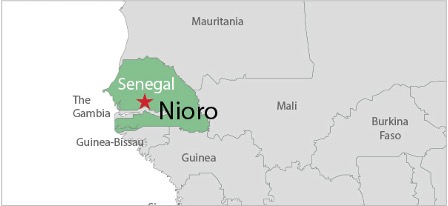
In Nioro, annual temperature ranges between 18°C and 44°C. Maximum temperatures in the region have increased sharply in recent decades while minimum temperatures have increased slightly. Annual precipitation is highly variable, between 418 and 1035mm.
The Senegalese agricultural sector is low in productivity and the country is food-deficit. Over the last ten years, domestic production has covered between 30% and 65% of annual cereal needs. Imported rice, wheat, and maize have covered the remaining gap (ANSD, 2016).
Poverty is more pronounced in rural areas with an incidence of 57.1% compared to 26.1% in Dakar (PSE, 2014). In the specific case of the peanut basin, income poverty is high, with 90% of households affected (Faye et al., 2020).




